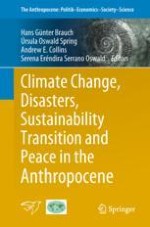2019 | OriginalPaper | Chapter
3. Responding to Socio-environmental Disasters in High-Intensity Conflict Scenarios: Challenges and Legitimation Strategies
Author : Rodrigo Mena
Published in: Climate Change, Disasters, Sustainability Transition and Peace in the Anthropocene
Publisher: Springer International Publishing
Activate our intelligent search to find suitable subject content or patents.
Select sections of text to find matching patents with Artificial Intelligence. powered by
Select sections of text to find additional relevant content using AI-assisted search. powered by
